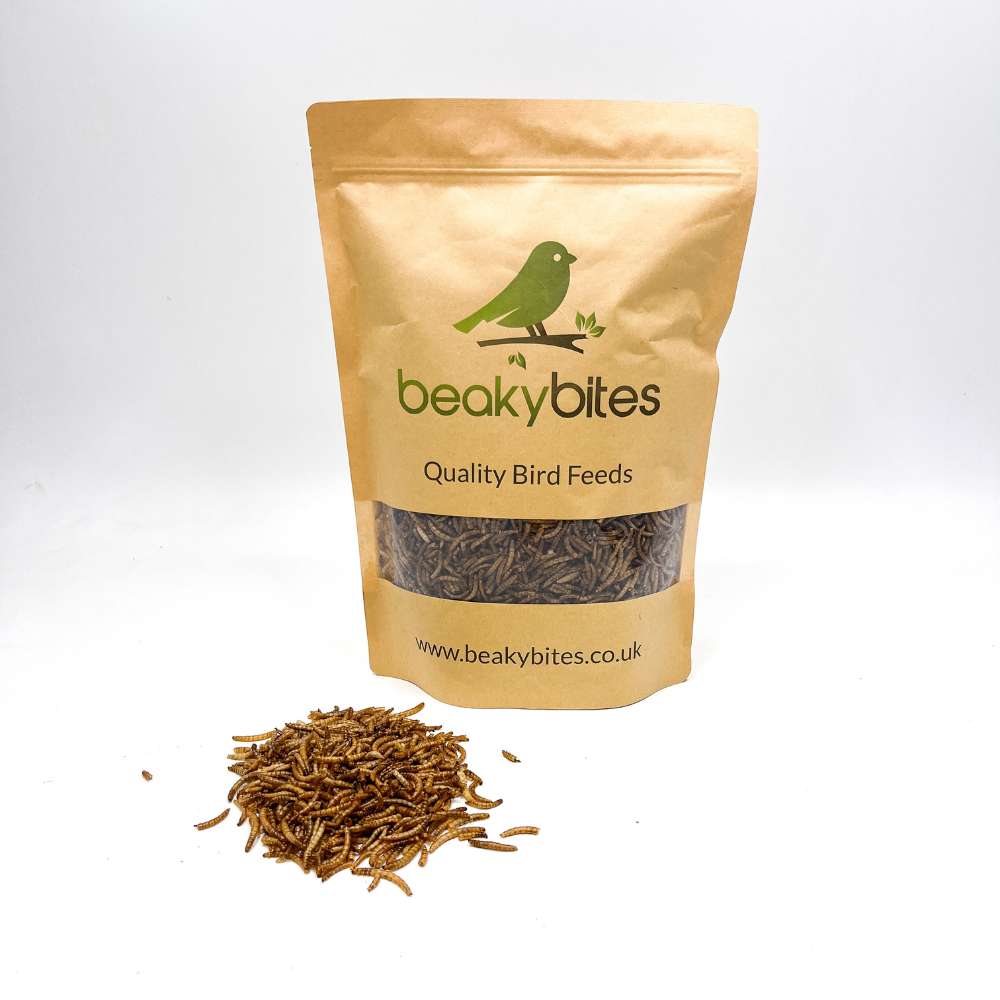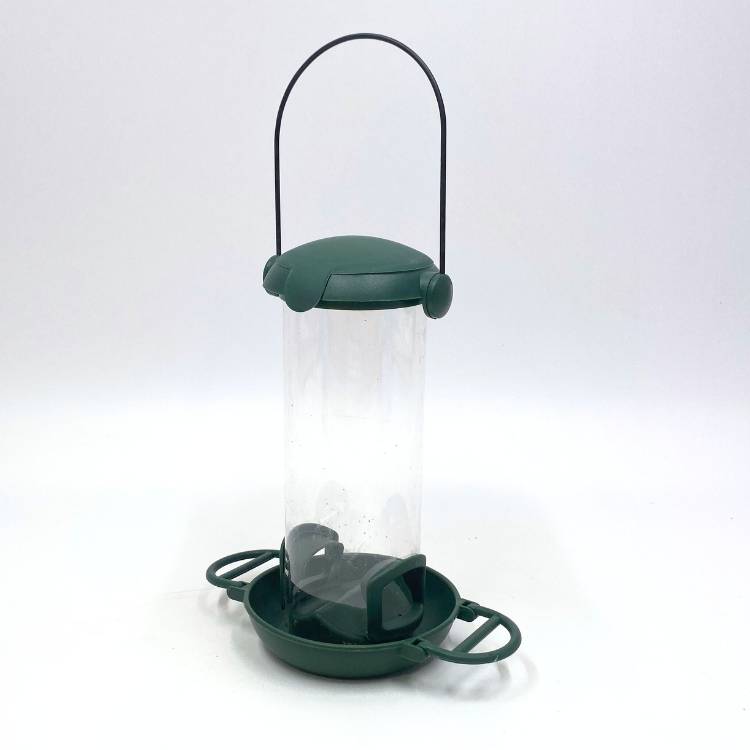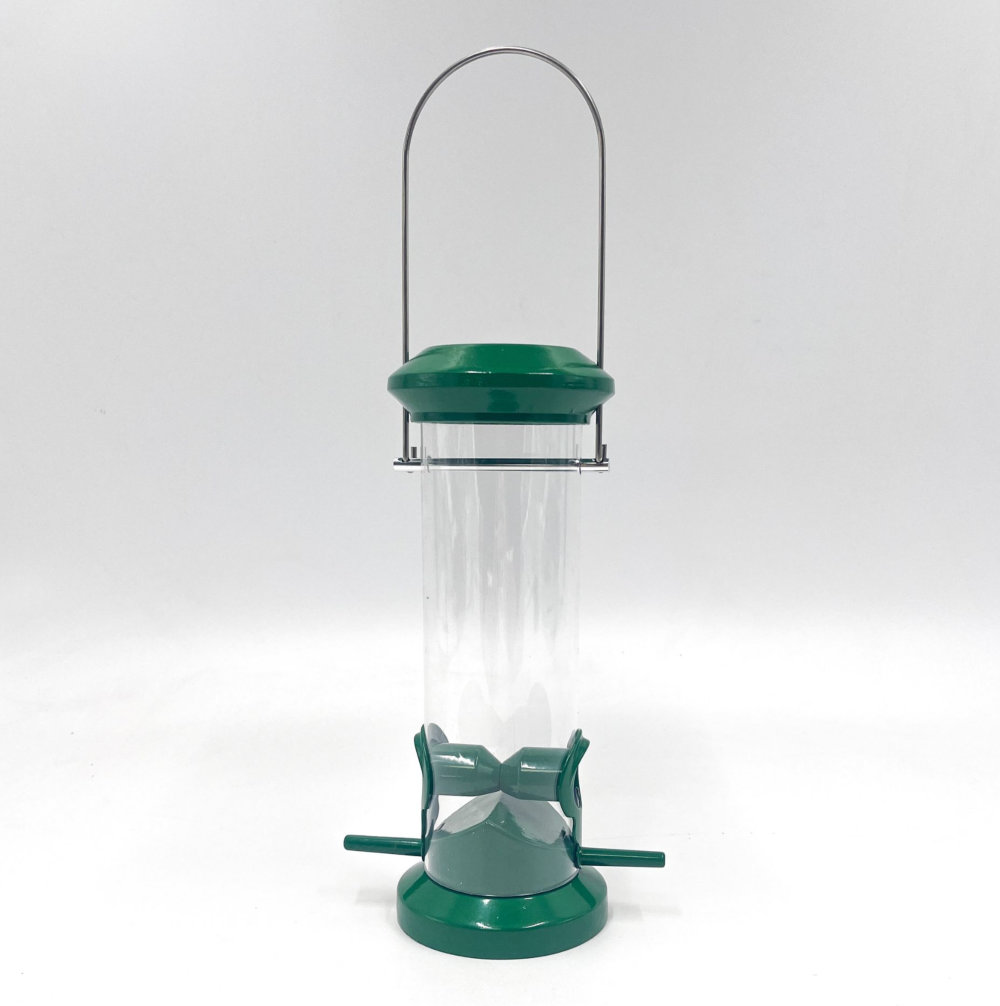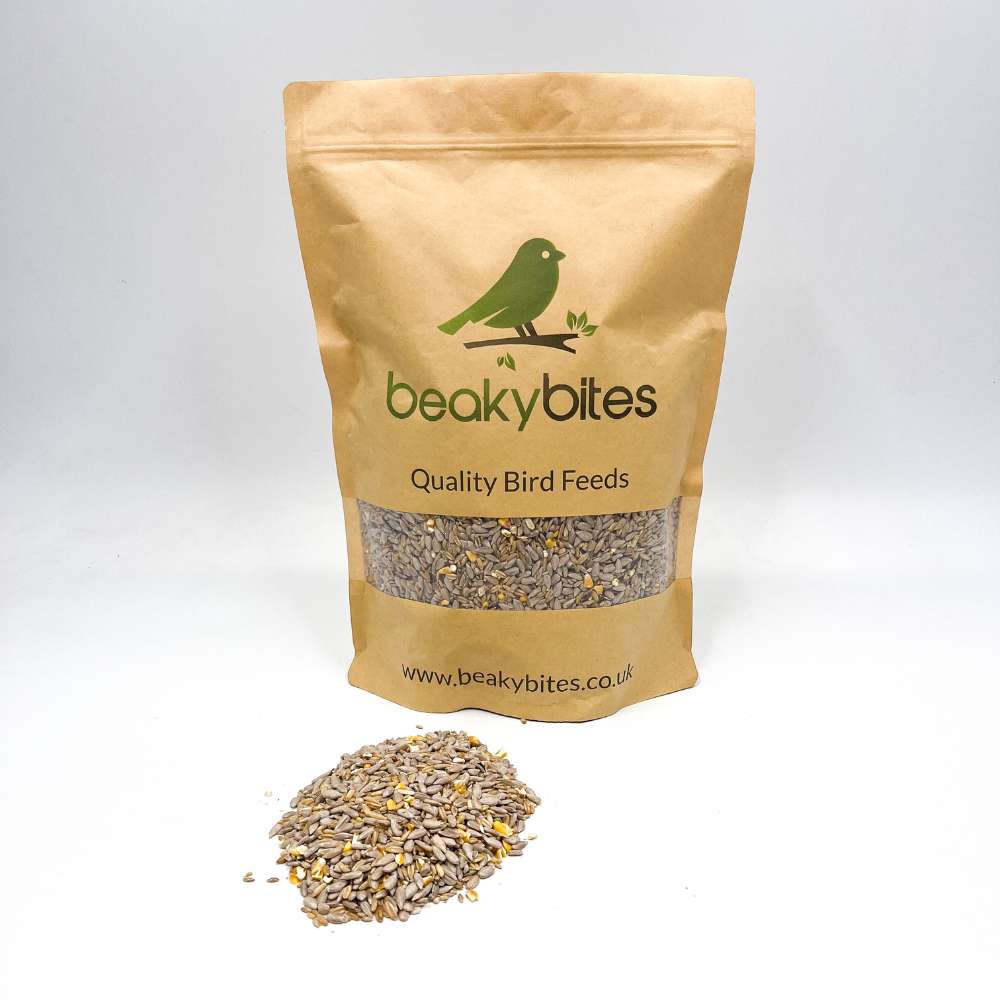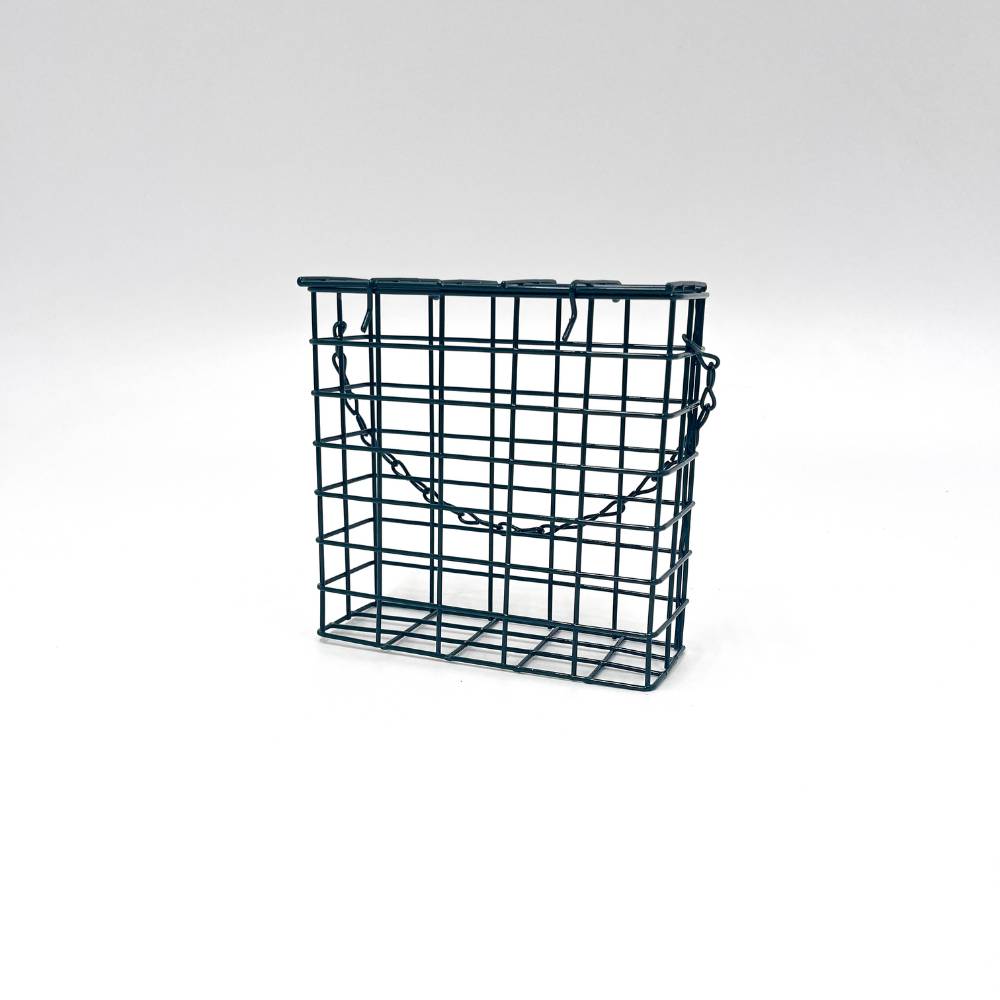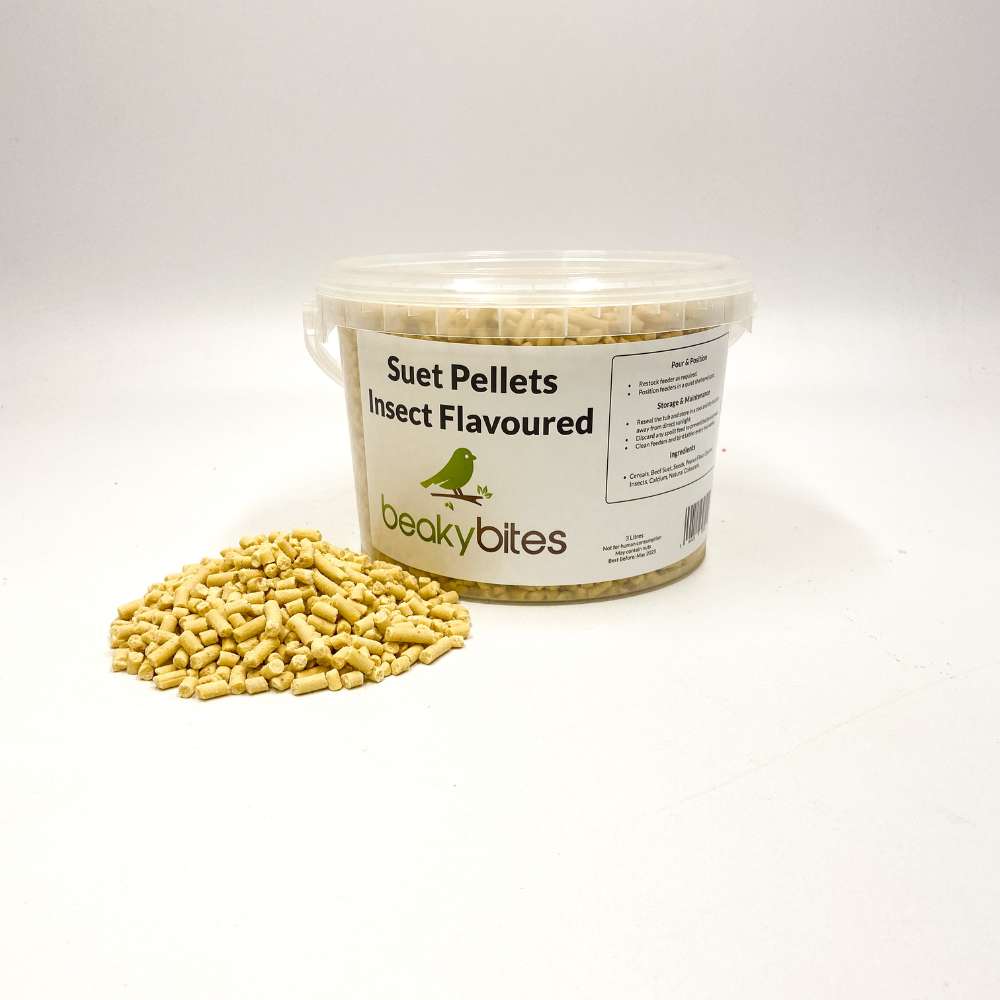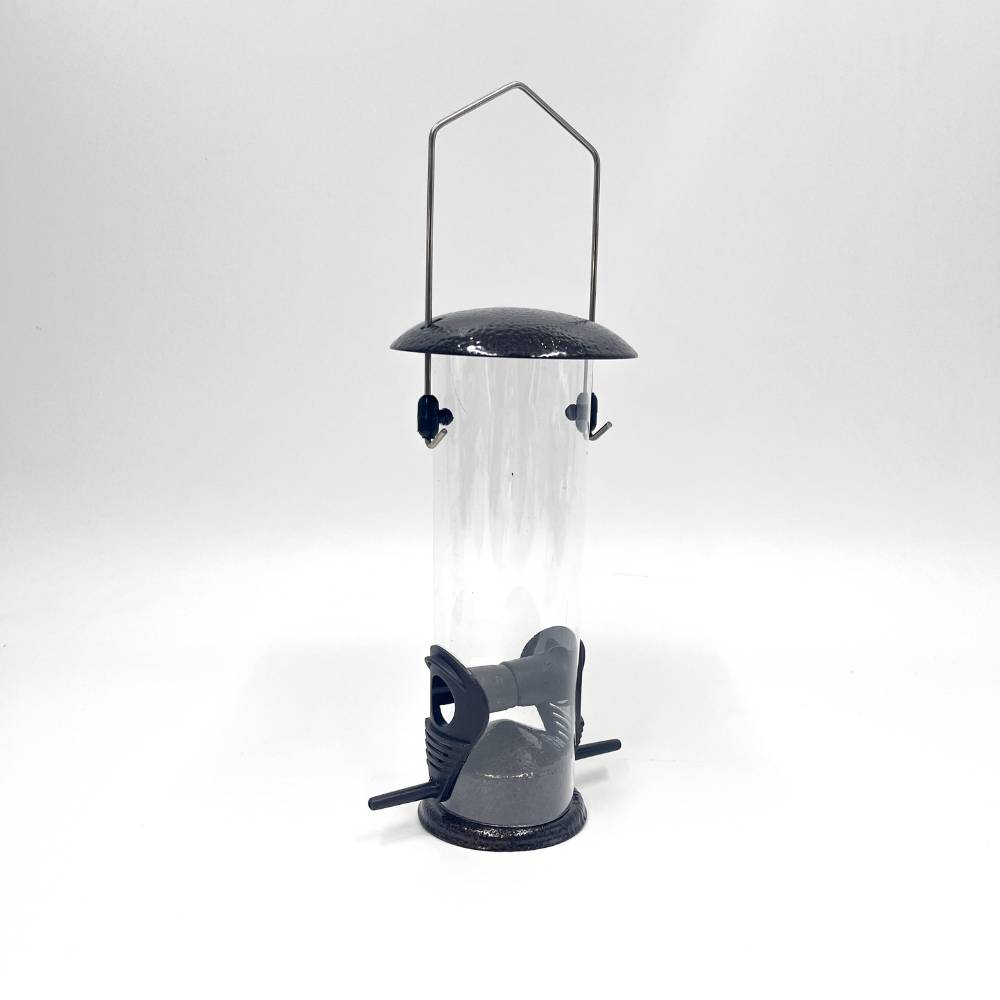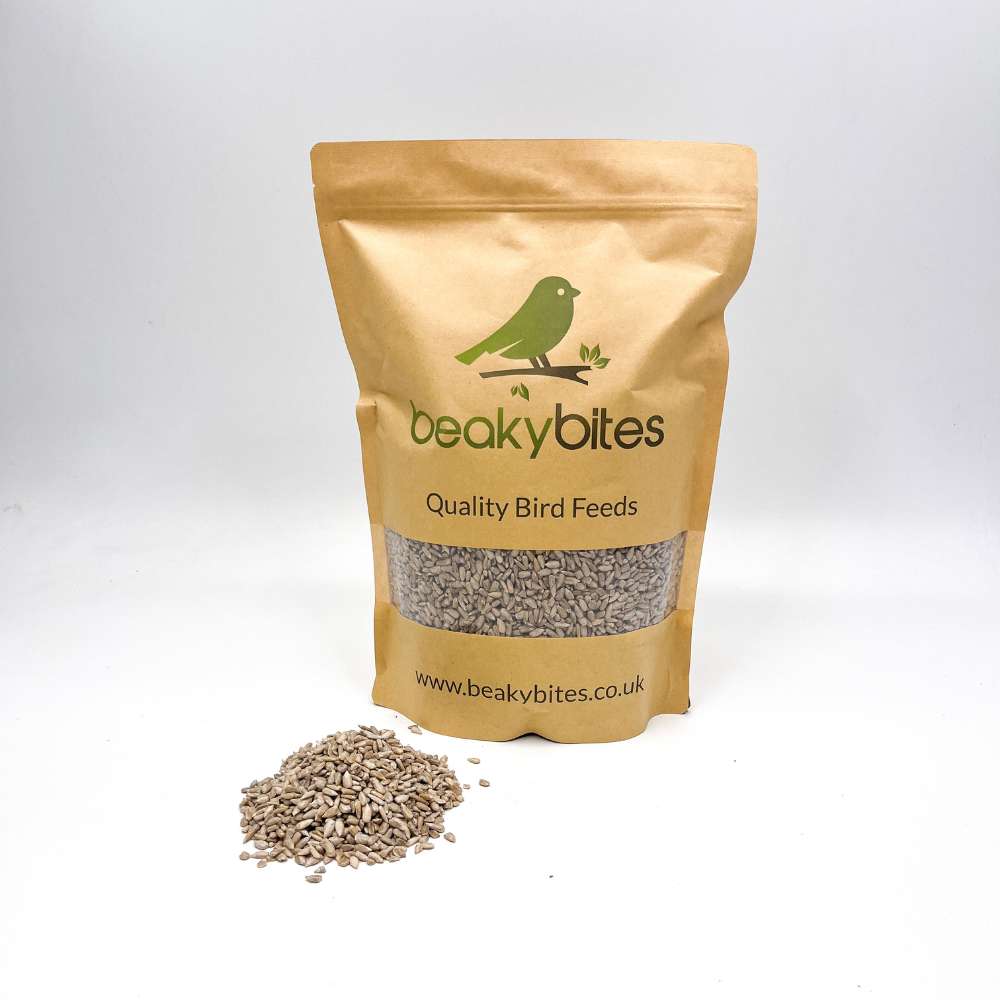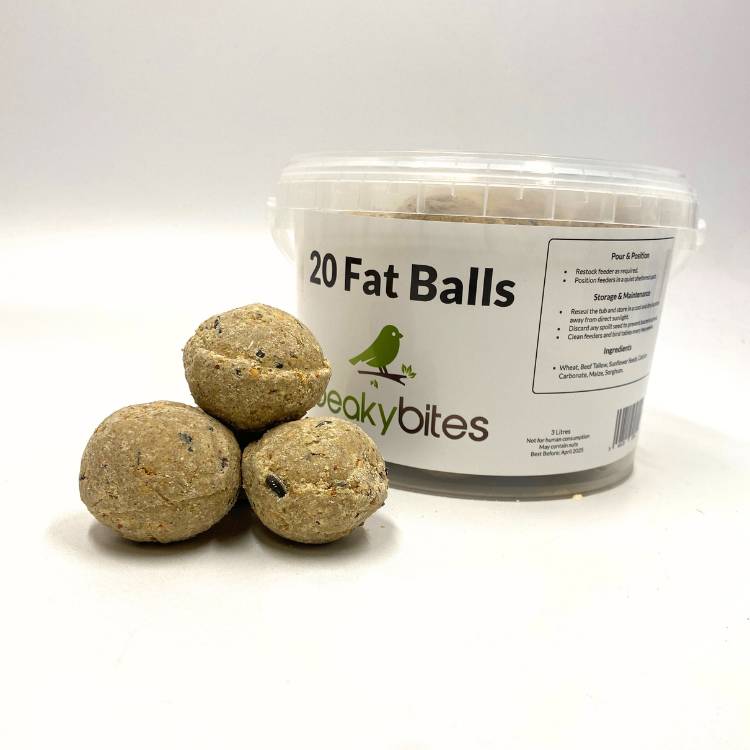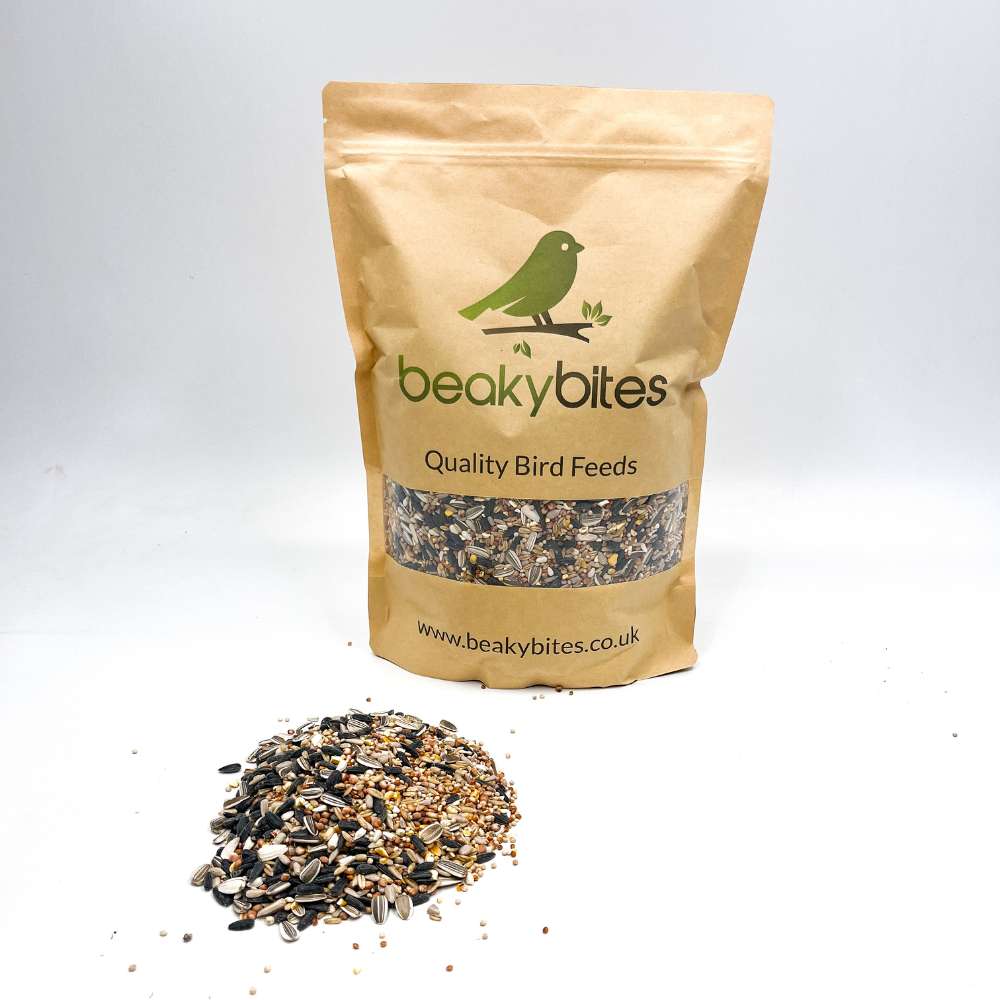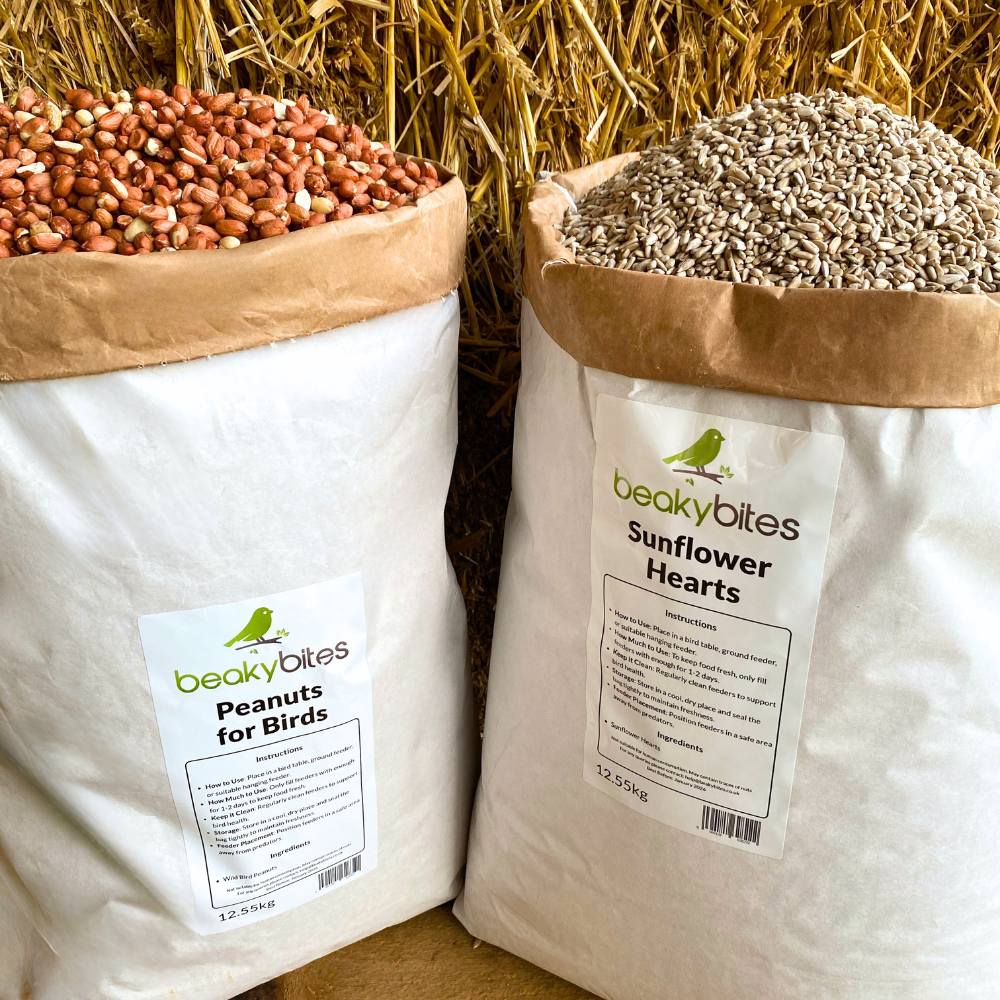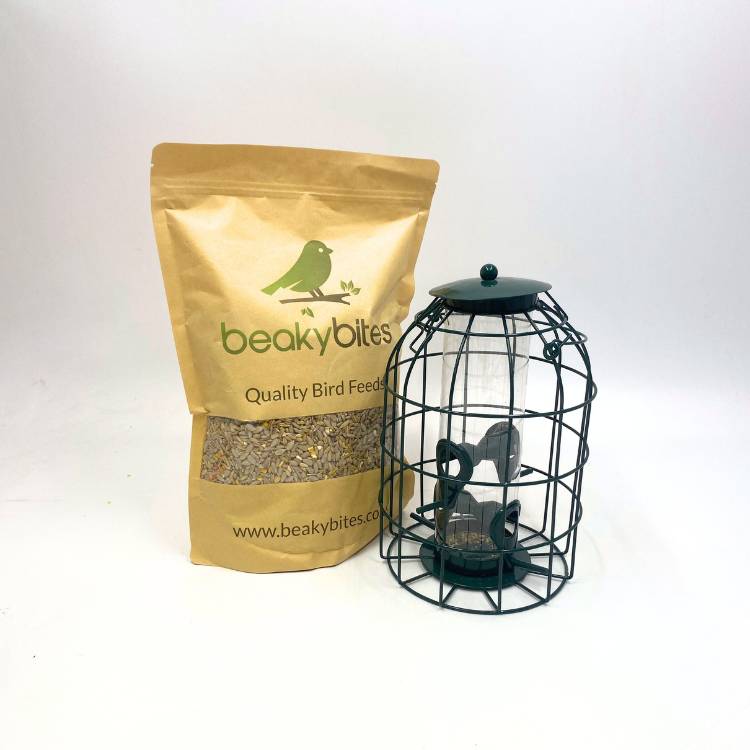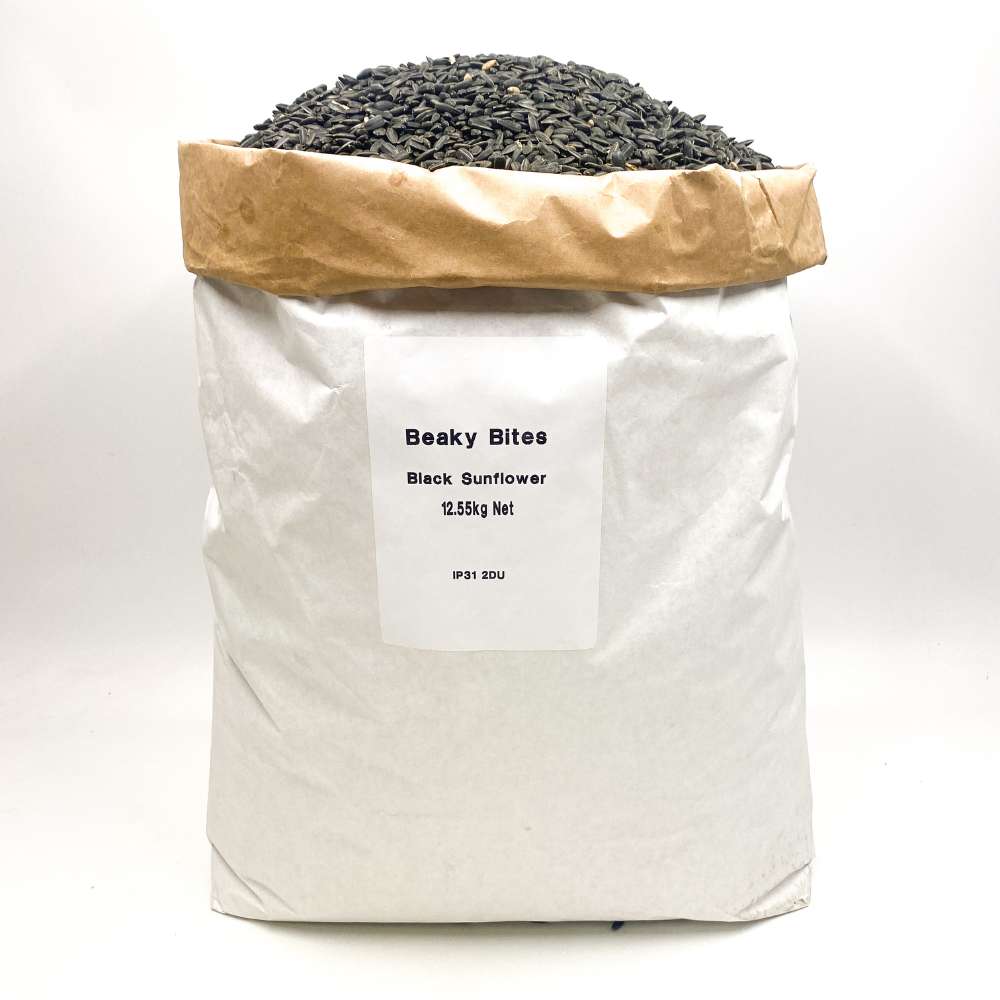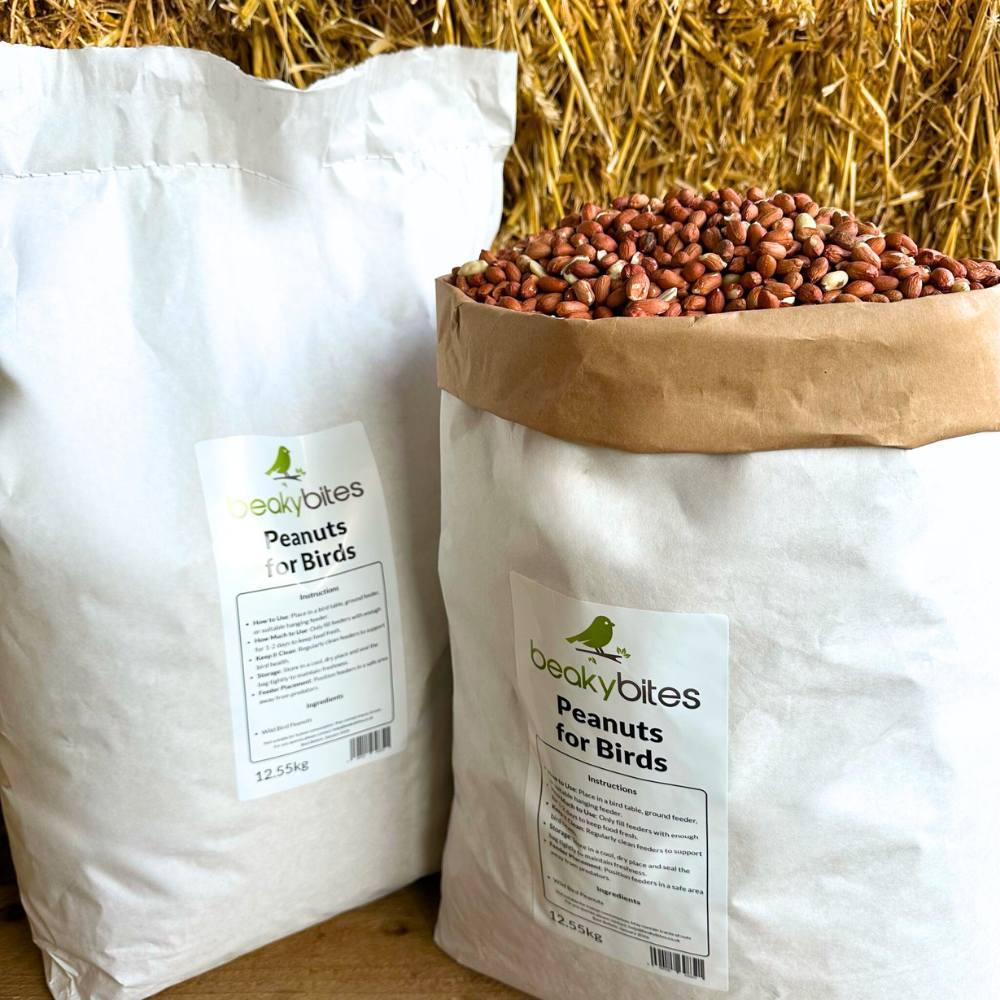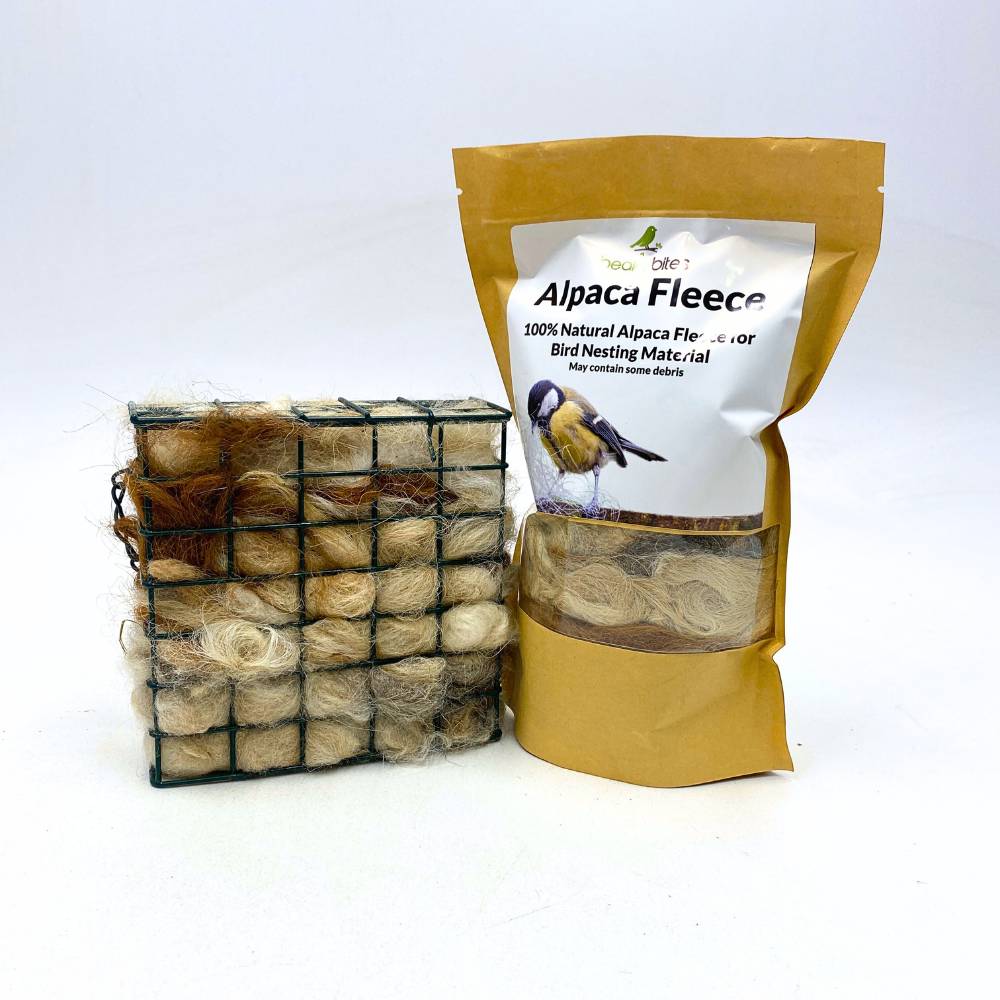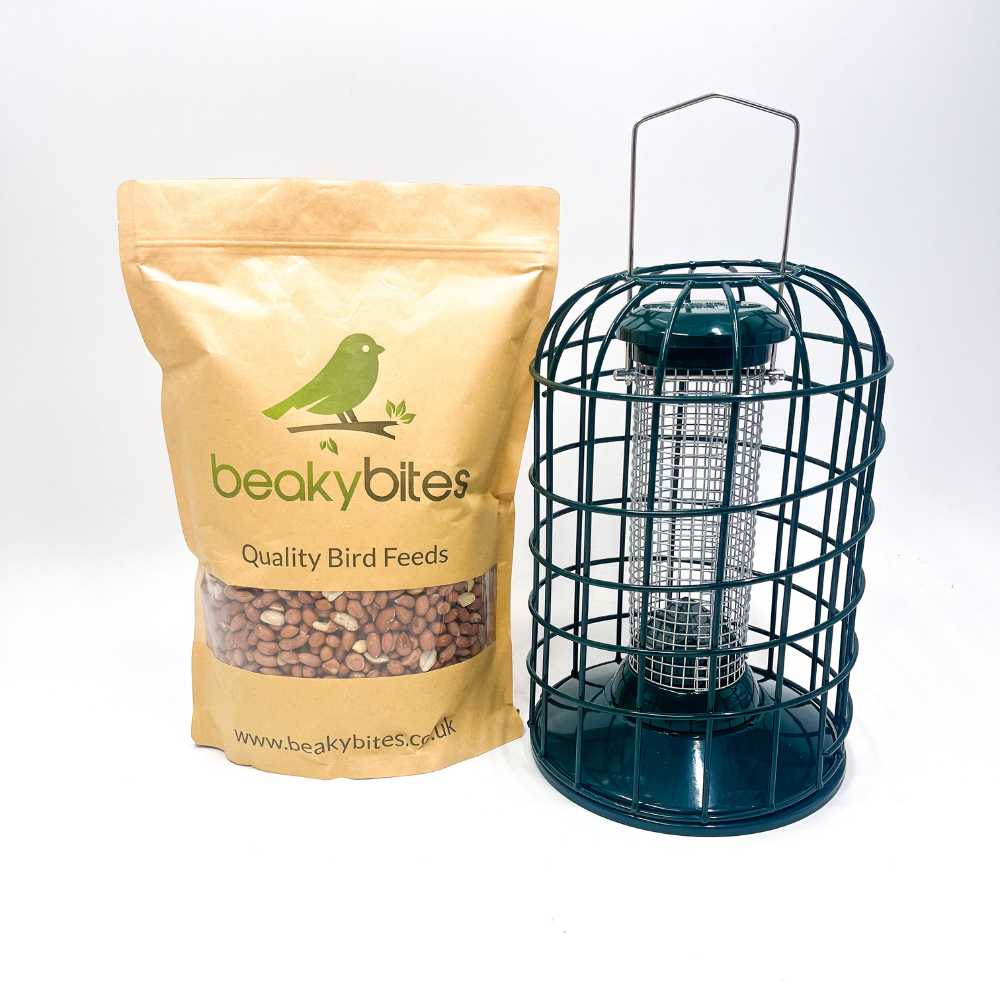Bird Fact File: Wagtail
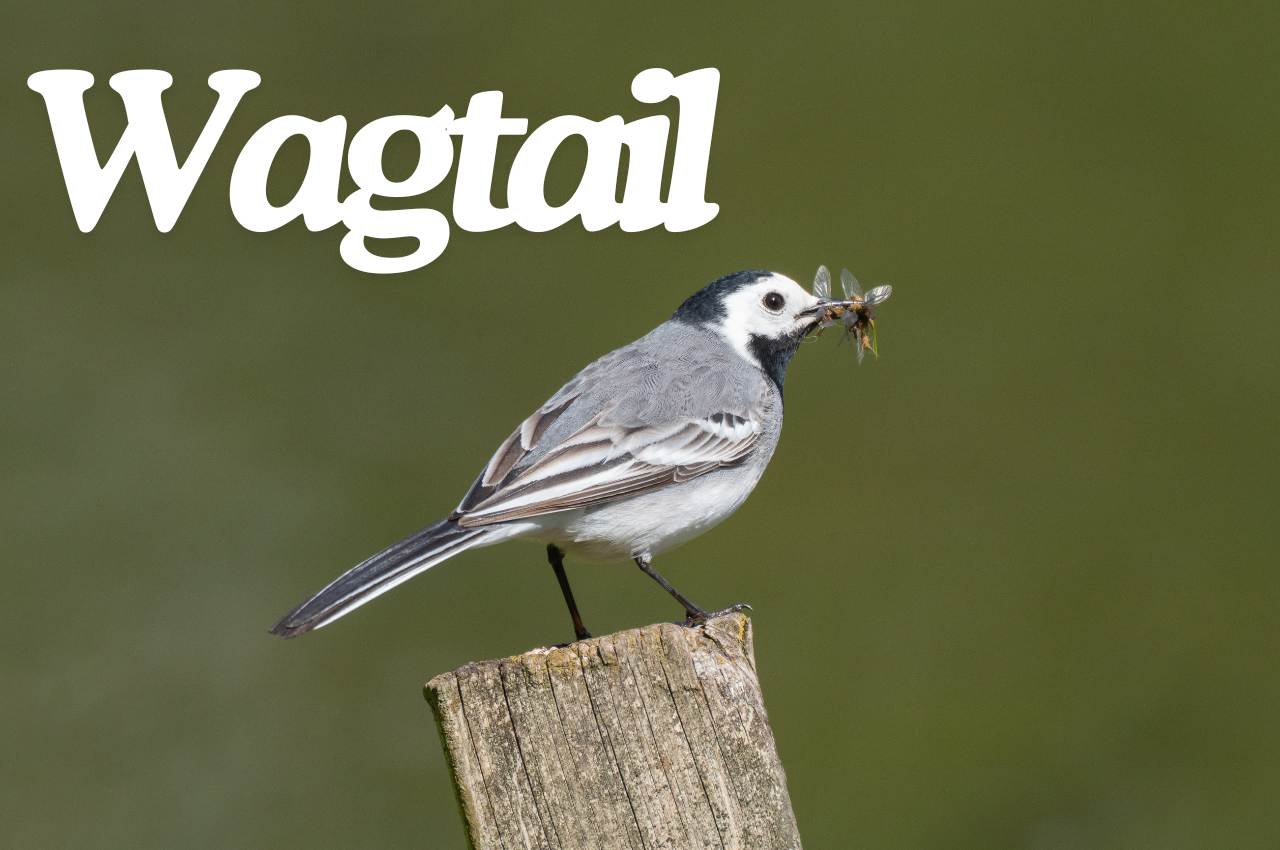
Welcome to our bird guide series brought to you by Beaky Bites! In each post, we'll take a closer look at a beloved UK garden bird to help you better understand and appreciate these amazing birds. From identifying distinct features to discovering their favourite foods and nesting habits, this series aims to provide an overview of our feathered wildlife.
Let's Meet the Wagtail
Wagtail Fact File | |
|---|---|
| Size: | 18cm, head to tail |
| Wingspan: | 25-30cm |
| Weight: | 17-25g |
| Colours: | Grey, Black and White |
| Eggs: | 5-6 eggs per brood |
| Nesting: | Use holes in buildings or rocks. Lined with horsehair, wool and feathers. |
| Population Status: | Stable |
The Wagtail is a slim and lively bird found in Europe, Asia and Africa. It wags its tail and sings a happy song. It likes open spaces, riversides, meadows and gardens so is a great bird to see for birders. The Latin name for the Wagtail is Motacilla and it’s in the Motacillidae family which includes other ground feeding insectivores. There are estimated 400,000 breeding pairs in the UK so Wagtails are common but under appreciated in the countryside and urban areas.

Appearance and Behaviour
Wagtails are long and lean birds with a distinctive look. Both males and females have the same body shape, long tail and black, white and grey plumage. Some species may have yellow on their underparts or face. The long tail is a key identifier, they bob it up and down all the time. Juveniles are similar to adults but with duller plumage and shorter tails.
Wagtails eat insects and small invertebrates which they catch by running and darting along the ground. They are often found in open areas like fields, riverbanks or even car parks where they chase after their prey. Their long, pointed beaks are perfect for picking insects off the ground or shallow water, they are great hunters.
In terms of behaviour wagtails are lively and social, often in small groups, especially during migration or outside breeding season. They are not as territorial as wrens but will defend their nesting sites. Wagtails prefer open areas for foraging but will seek out sheltered spots like dense vegetation, buildings or even rock crevices to nest. In gardens they are often seen foraging on lawns or near water features where their tail wagging adds a bit of drama to their behaviour.
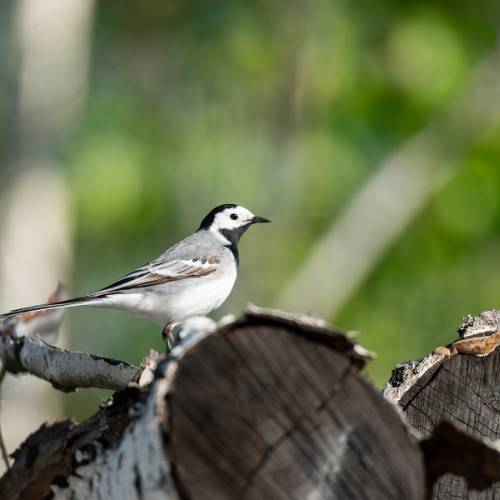
Where do They Hang Out and Eat?
Wagtails are busy feeders, always on the move as they search for food around them. Their diet is insectivorous mainly during the warmer months when they need extra energy for breeding and raising their young. They eat insects, flies, beetles and other small invertebrates, which they chase and dart across open ground, often near water or in grassy areas.
As the seasons change and insects become scarce, wagtails adjust their diet to include seeds, small berries and other plant material, but they still prefer insects whenever they can. Unlike wrens, wagtails are more likely to be seen foraging in open spaces like lawns, meadows and along riverbanks rather than in dense undergrowth. They may occasionally visit bird feeders, especially if mealworms or suet are on offer, but they are more often found chasing insects in more natural habitats.
Wagtails visit gardens, especially those with open space to forage. They love areas near water where insects are plentiful. A garden with a mix of open space and some sheltered spots will attract wagtails, especially during migration or in winter when food is scarce. Watching a wagtail’s flight and wagging tail is a treat for any bird fan.
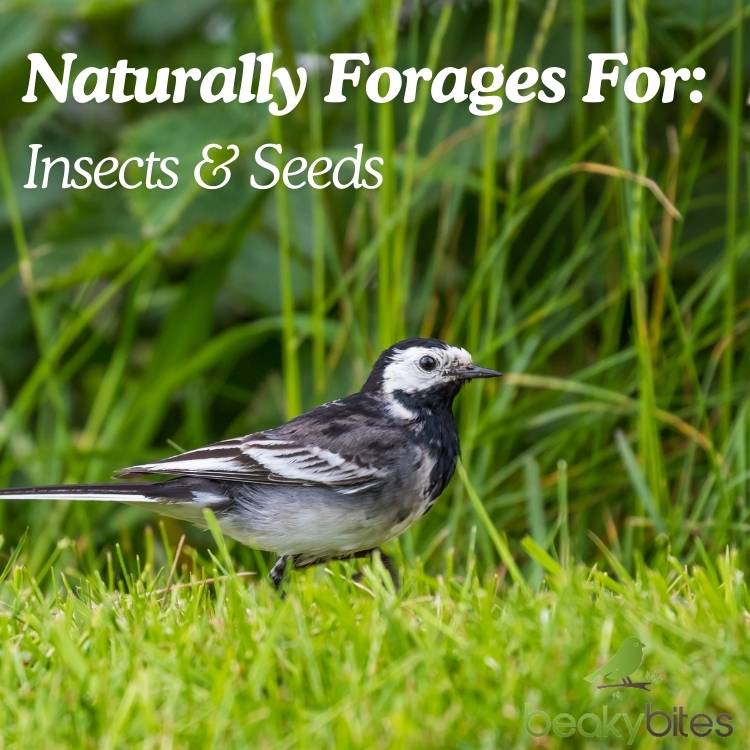
Breeding and Nesting
Wagtails start breeding in late spring, around May and go on till August, and can have two broods in a year. The number of broods can vary depending on weather and food availability which affects the parents ability to raise their young. Female wagtails lay 5-6 eggs which hatch after 11-14 days of incubation. Both parents feed the chicks a diet of insects and small invertebrates for about 2 weeks before the young leave the nest.
Wagtails are slightly territorial during breeding season, males do display flights and singing to establish and defend their territory. Once a wagtail pair has established a territory, they will stay within it for the breeding season but may range further for food as needed, especially once the chicks have fledged.
Female wagtails build their nests by themselves, using dried grass, moss and feathers, a neat cup shaped structure. These nests are usually built in sheltered places like crevices in walls, under bridges or in thick vegetation to protect from predators and harsh weather. The choice of nesting site is strategic so the young are well hidden and safe as they grow and get ready to fledge.
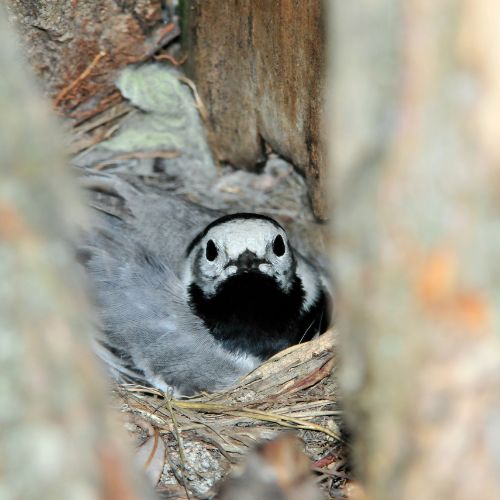
Attracting Them to Your Garden
Wagtails eat insects and small invertebrates so you need to create a garden that has a rich supply of these food sources. While wagtails may visit bird feeders occasionally they are more often found foraging on lawns, near water features or in open spaces where they can chase after their prey. To support wagtails consider creating a garden with open areas for foraging and features like ponds or shallow water which attract insects.
Wagtails are not territorial but need a consistent food supply. A garden with year round insect activity is beneficial. A reliable habitat with access to water and a steady supply of insects is especially important during breeding season which is late spring to summer to help the adults raise strong and healthy chicks.
To have a wagtail friendly garden focus on open spaces with short grass, water features and native plants that attract insects. Low growing plants near the water’s edge can offer extra foraging opportunities. Wagtails are social so they may forage more openly especially near water. By providing the right mix of open areas and water rich environments you can get wagtails to visit your garden and make it their home for the season. Once they are there use dried mealworms to keep them coming back time after time.
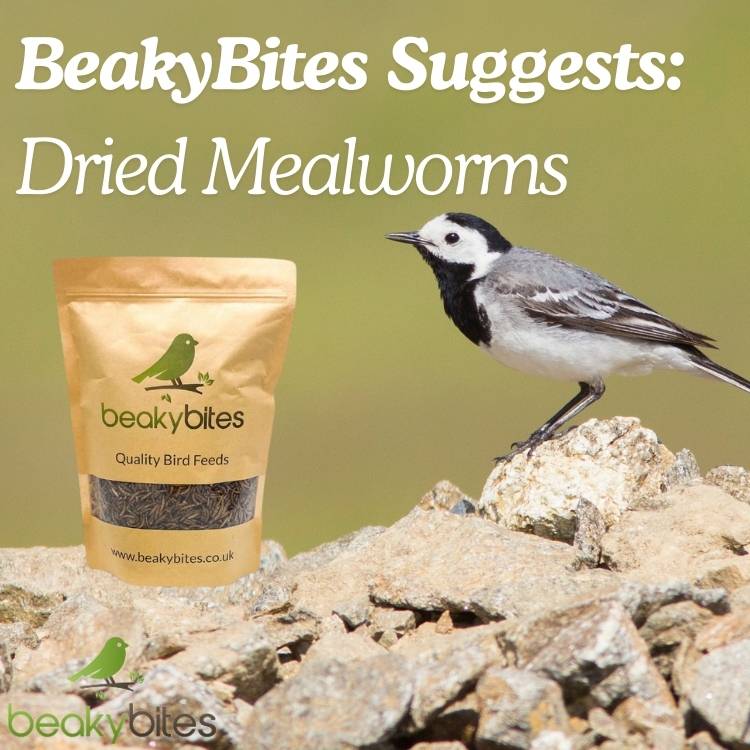
Conclusion
Creating a wagtail-friendly garden involves providing open spaces for foraging, ensuring access to water sources that attract insects, and offering sheltered nesting sites. By making these thoughtful adjustments, you can encourage these graceful and active birds to visit your garden, adding lively movement and charm to your outdoor space.
Whether you're an experienced bird enthusiast or just starting out, welcoming Wrens into your garden is a delightful and rewarding experience. Stay tuned for next week's post, where we'll discover another fascinating UK garden bird!
Frequently Asked Questions
When is the wagtail breeding season, and how many broods do they typically have?
- Answer: Wagtails breed from late spring to summer, typically having two broods per year.
Do wagtails migrate, and if so, where do they go?
- Answer: Yes, many wagtails migrate to warmer regions during the winter, with some species traveling as far as Africa.
How do wagtails behave in urban environments compared to rural areas?
- Answer: In urban environments, wagtails often forage in parks, car parks, and near water sources, adapting well to human presence.
What do wagtails eat, and how can I attract them to my garden?
- Answer: Wagtails eat insects and small invertebrates; you can attract them by maintaining open spaces with short grass and water features in your garden.
What role do wagtails play in the ecosystem, particularly in controlling insect populations?
- Answer: Wagtails play a crucial role in controlling insect populations by feeding on a variety of insects and small invertebrates.

